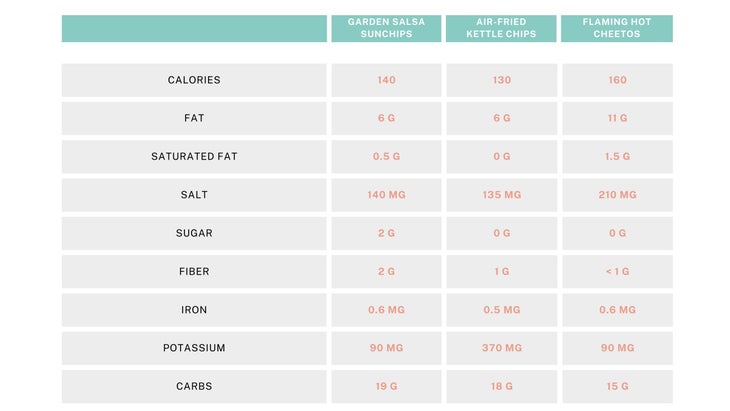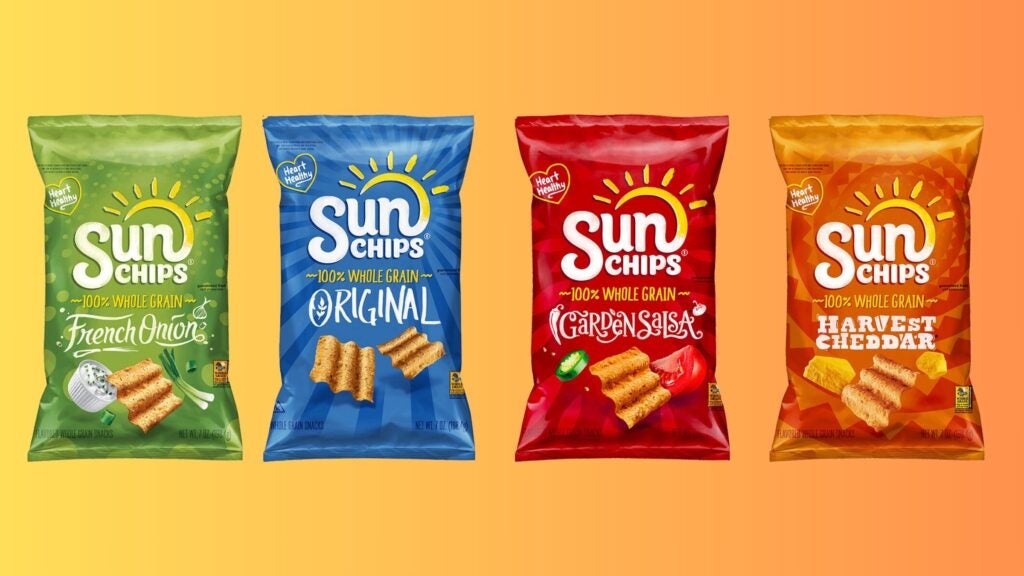No products in the cart.
Outdoor Adventure
Are SunChips Healthy?
In my twenties, chips, gummy bears, and the cheesiest burritos I could make once fueled all of my runs, climbs, and camping trips. Now well into my mid-thirties and trying to set a better example for my growing toddler, I’ve spent the last two years rewriting my usual travel menu. I’ve largely replaced Skittles with real fruit and beer with La Croix. Flaming Hot Cheetos no longer claim permanent residency in my glove box. These days, as I stock up on snacks at the grocery store, my cart overflows with berries and carrot sticks.
But I can’t seem to kick my chip habit. After all, what’s a camping trip without a good bag of chips? On a recent snack run, I scanned the rows of Lays and Doritos, and quickly walked by the impostors—cauliflower crackers and freeze-dried broccoli don’t count—until my eyes fell on the row of SunChips.
Nostalgia washed over me as I reached for a red bag of the Garden Salsa flavor. Growing up in the nineties, SunChips were the snack. I distinctly remember opening my childhood best friend’s pantry with envy and grabbing the always-present bag of French Onion SunChips.
SunChips’ Appeal to Health-Conscious Outdoorsy Types
In retrospect, I’m not sure I totally understand the hype. Sure, they’re totally delicious—mouthwateringly salty, with a slightly sweet aftertaste. Each flavor brings something a little different, from the gentle bite of Garden Salsa to Ranch that bursts with tang. And there’s something about the way they crunch: hearty, like you’re biting into a snack of substance. But there are a lot of other good chips out there. SunChip’s secret to success was, of course, that millennials like me grew up assuming they were better for you than regular chips.
During its 1991 debut, SunChips leaned into the healthy branding: “multigrain snacks” appeared in big letters on the bag, next to a bright sun and a stalk of wheat. A few years later, the company added “30% less fat than regular potato chips,” pandering to nineties diet culture. Today, SunChips’ packaging still screams, in huge font, “100% Whole Grain.”
Back then, with flavors like Harvest Cheddar and Garden Salsa, who were we to argue? In the early days, SunChips weren’t only highlighting ingredients and fat percentages; they were specifically targeting outdoorsy types. One ad from the nineties pans over a desert scene as a couple munches on SunChips on top of a camping trailer, enjoying the sunset.
SunChips’ intentional alignment with the outdoorsy, sporty crowd created an aura of health around the snack, so—regardless of whether the claims were totally true—the brand leaned in more. There were puns about sunblock and sunscreen in many of its commercials. Then, in 2008, SunChips appeared on shelves in what the brand claimed was the world’s first compostable bag.
But planet-friendly packaging and camping commercials don’t equate to health food. Consumers actually pushed back against the “too-noisy” SunChips bags, and the brand quietly returned to its less eco-friendly, but quieter bags two years after that particular marketing push fell flat.
Are SunChips Healthy?
Health has been front and center in SunChips’ marketing campaigns over the last 33 years, and they at least had me convinced for a few decades that the chips were a healthier option than other brands. But lately, as I overhauled my family’s summertime shopping list, I started to wonder whether I’d been duped.
The answer, according to registered dietitian nutritionist Lauren Manaker, is complicated. SunChips really are made with whole grains, which are key for sufficient intake of fiber and nutrients, like B vitamins, iron, and magnesium. Neglecting whole grains in your diet could increase the risk of chronic illnesses, including heart disease, type 2 diabetes, and some forms of cancer, due to missing out on the protective antioxidants and anti-inflammatory properties found in these foods.
That said, SunChips still have salt and fat—110 milligrams and 6 grams per serving of the original flavor, respectively. Sodium and fat are key parts of a healthy diet, but Manaker says you should eat them in moderation.
“Ideally, people are getting their whole-grain fix from ancient grains, whole-grain bread, and other similar foods that do not contain large quantities of added salt and fat,” she says. “But since most Americans are missing the mark, these can be a healthier choice than a deep-fried potato chip.”

When I compared the nutritional facts of SunChips’ Garden Salsa (my personal favorite) with Kettle’s Air-Fried Himalayan Salt chips and my guilty pleasure, Flaming Hot Cheetos, I was surprised to see that Kettle was the overall healthiest. Cheetos carried 11 grams of fat, compared to SunChips’ and Kettles’ 6 grams, and both SunChips and Cheetos had some saturated fat—at 0.5 grams and 1.5 grams, respectively—compared to Kettle’s zero. Kettle has a whopping 370 milligrams of potassium and 2 grams of protein; the others have neither. When it comes to sodium, Cheetos come with 210 milligrams per serving, SunChips have 140 milligrams, and Kettle chips have 135 milligrams. And finally, for all of its marketing around whole grains, SunChips has 2 grams of fiber, which is a bit more than Kettle’s 1 gram and Cheetos’ less than a gram.
Numbers aside, for me—someone who strives to make fresh produce and simple whole grains the main part of my diet—I don’t see any harm in grabbing a bag of SunChips on my next trip to the store. I’m also trying to unlearn the “good-food, bad-food” language that most millennials grew up with. I want my two-year-old to eat food because he’s hungry and it makes him feel good, instead of slapping labels on his meals and snacks. So if the two of us want to munch on some chips of the Garden Salsa variety from the comfort of our camp chairs, that’s exactly what we’re going to do on our next trip.
Source link

